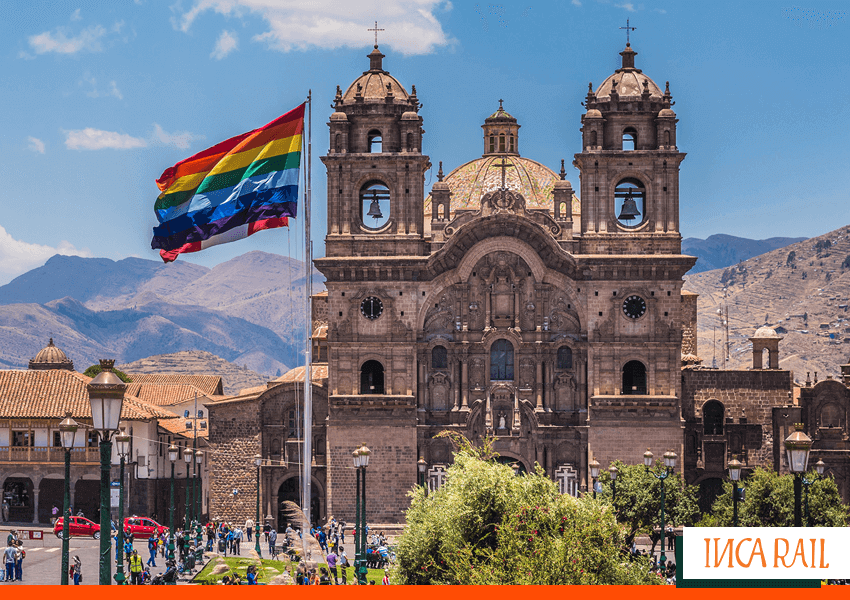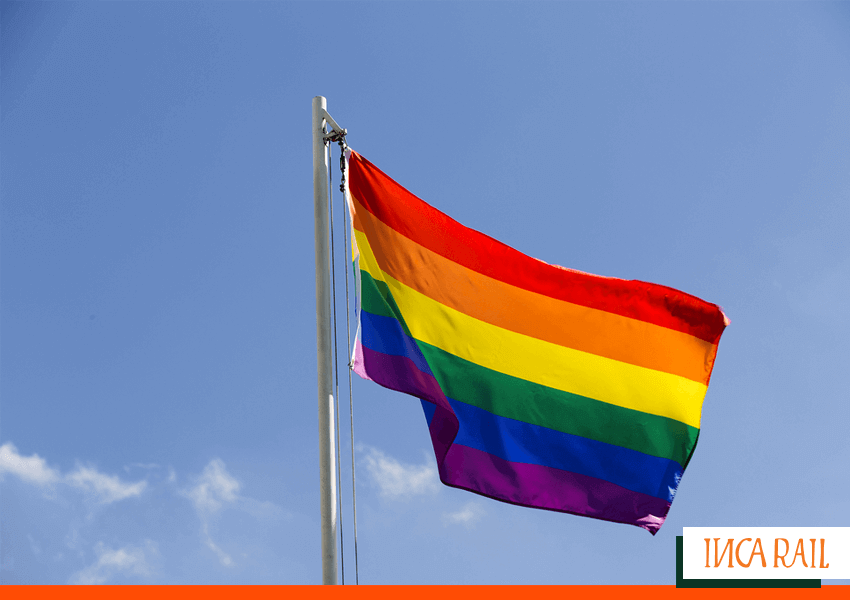One of the things that most attracts the attention of tourists (and also locals) that wander through the city of Cusco, is the amount of multicolored flags in the great buildings of the Inca Empire. Beyond its colorful design lies a narrative that traverses the ancient landscapes of Peru, weaving together tales of culture, conquest, and spiritual significance. Join us on this insightful journey as we unfurl the layers of the Inca flag, exploring its hidden meanings and the profound role it played in shaping the identity of a civilization that left an indelible mark on the Andean highlands. Let the colors guide you through the rich tapestry of the Inca legacy, providing a vivid perspective on the cultural heritage that continues to captivate hearts and minds.
What will you find here?
- Origin of the Flag of Tahuantinsuyo
- Inca Flag vs. Pride Flag: Navigating the Differences and Debunking Myths
- The Wiphala Flag - Another Symbol of Tahuantinsuyo
Origin of the Flag of Tahuantinsuyo
In the time of the Incas, there were no such symbols. This is rather the result of a modern interpretation, created in the 70’s (before the LGBT Flag) by the radio station of folk music Radio Tawantinsuyo, and later adopted by the City Hall of Cusco as a national symbol of that time.
Nevertheless, for many historians, this fact must be rectified because it is equivocal and undue since it builds a false reality on the Inca cultural legacy.
And because this issue never got beyond, the streets of the capital of Cusco still adorns flags of multiple colors, which contrast very well with the bright colors of the highlands.

Inca Flag vs. Pride Flag: Navigating the Differences and Debunking Myths
The first intuition of many is to wonder why there would be so many Flags of Diversity there; also known as the LGBT Flag (Lesbian, Gay, Bisexual and Transgendered, a symbol since 1978). And although at first glance they may seem similar, the one found in Cusco is nothing more than the Flag of Tahuantinsuyo, a modern representation of the Inca Empire, and it differs because it has 7 multicolored stripes while the former only has 5.
Likewise, differentiating between the Inca flag and the Pride flag requires a nuanced understanding of their distinct origins and historical contexts. The Inca flag, introduced in 1973 by Raúl Montesinos Espejo as the flag of the Incas, features seven-colored stripes and was initially associated with Tawantinsuyo Radio's anniversary. Despite its later adoption by the municipality of Cusco in 1978, it's essential to note that historical evidence, including accounts from Spanish chroniclers and esteemed historians like María Rostworowski, contradicts the notion that the Inca culture had a flag or any concept of such symbolism. The flag's modern association with Inca heritage is a more recent development, sparked by its adoption as a symbol for the region.
On the other hand, the Pride flag, created in 1978, holds a different narrative. It was specifically designed to represent the LGBTQ+ community's diversity and inclusivity. Each color in the Pride flag carries a specific meaning related to identity and equality. While both flags celebrate identity and were inspired by the rainbow, and because of that, they lend themselves to confusion, especially since the Flag of Cusco is not promoted so much worldwide, their historical roots and cultural connotations diverge significantly. Navigating these differences dispels myths and allows for a more accurate appreciation of the distinct cultural and historical narratives embodied in each flag.
The Wiphala Flag - Another Symbol of Tahuantinsuyo
The Wiphala flag, recognized as another significant symbol of Tahuantinsuyo, holds deep cultural and historical roots in the Andean region. Comprising a checkerboard pattern of seven colors, the Wiphala represents the diverse ethnic groups within the Inca Empire. Each bearing within the flag holds profound significance, reflecting the diversity and complexity of the Inca civilization:
-
Red: Symbolizing the Earth, forging a profound connection to the land that sustained the Inca people.
-
Orange: Reflecting the agricultural abundance and the fertile soils that supported Inca agriculture.
-
Yellow: Signifying the sun, a central deity in Inca cosmology, underscoring its paramount importance.
-
Green: Embodying fertility, mirroring the lush landscapes and agricultural prosperity.
-
Blue: Representing the sky and celestial realms, emphasizing the spiritual dimensions of Inca beliefs.
-
Violet: Symbolizing the union of opposites and acknowledging the dualities inherent in life.
-
White: Representing purity and mirroring the snow-capped peaks of the majestic Andes.
Carrying the legacy of Tahuantinsuyo, the Wiphala flag is more than a visual emblem; it encapsulates the complex societal structures and interconnectedness that defined the Inca Empire. Its presence at significant events, cultural celebrations, and even governmental institutions reflects its enduring importance in the modern Andean landscape, making the Wiphala a dynamic symbol that bridges the historical legacy of Tahuantinsuyo with contemporary indigenous identity.












